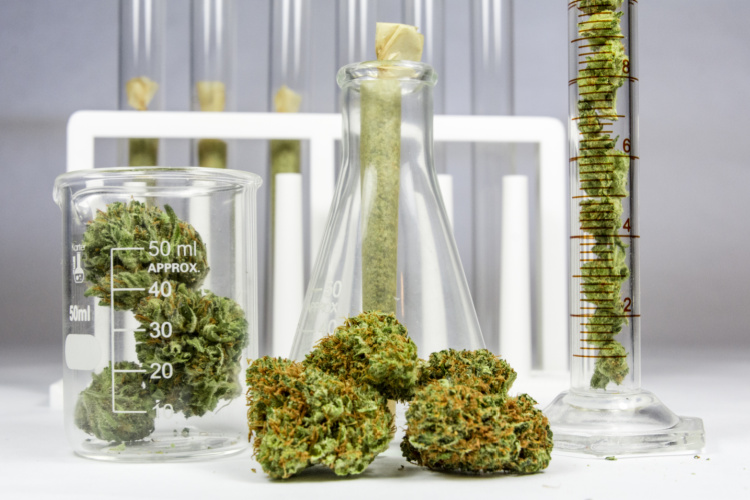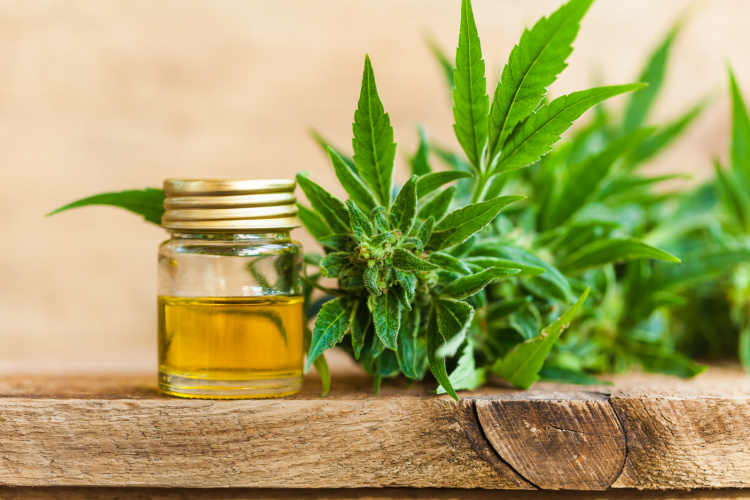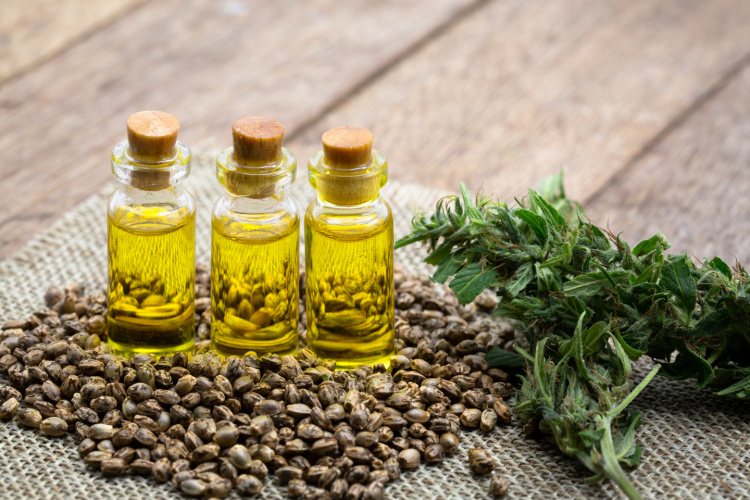You’re probably well-acquainted with THC and CBD, the two most abundant cannabinoids—or “active ingredients”—in cannabis. But they’re hardly the only game in town. Now researchers have announced the discovery of two new compounds—THCP and CBDP—that may prove to offer significant advances for medical cannabis. We’ll share what we know about this exciting discovery and what still remains to be learned.

New Cannabinoids: What Is THCP?
Late in 2019, a team of Italian researchers published their findings concerning new cannabinoids THCP and CBDP. They’re not the only cannabinoids besides THC and CBD—scientists have identified over 150 of them—but unlike many of the so-called “minor cannabinoids,” THCP and CBDP appear to have potentially major impacts on our bodies’ Endocannabinoid System, the major regulatory network with which the cannabinoids interact.
Let’s begin with THCP. Previously, it was believed that THC was the only cannabinoid to impart the cannabis plant’s characteristic “high.” Not only does THCP also have this effect, but it possesses a unique chemical “side chain” structure that bonds more readily than does THC. This makes it roughly 33 times more powerful compared with regular THC’s activity on our CB1 receptors, and 5 to 10 times more powerful when interacting with the CB2 receptor.
What does this mean to you? For one thing, it may shed light on one of the most persistent questions about cannabis medicine: Why different people react so differently to different strains of cannabis. It’s possible that, because the existence of THCP was until now unknown, its presence gives the strains in which it occurs a far more powerful effect than a glance at their THC contents would suggest. But as with so many questions in the world of cannabis, this one will require more research before we can hazard a definitive answer.

New Cannabinoids: What Is CBDP?
Like THCP, CBDP has a similar side chain structure, enabling it to bind more readily to our CB1 and CB2 cannabinoid receptors than does CBD. But for the moment at least, it appears this may not make a huge difference. As it turns out, CBD doesn’t bond particularly well with either type of receptor, so that unique structure may not turn out to make a great difference.
That said, even the benefits of CBD are still being discovered. Researchers already know a good deal about the second most abundant cannabinoid’s medicinal properties, including its ability to help combat inflammation, fight pain, and offer relief from anxiety and stress. It’s possible that CBDP may turn out to be as medically useful as THCP appears to be, but the truth is that for the moment, we just don’t know, and some experts predict that in the short run, THCP will probably garner more intensive study.

New Cannabinoids: What Will They Mean for Cannabis Medicine?
The potential of increased potency of these new cannabinoids could have far-reaching effects when it comes to designing new cannabis medicines. Because each cannabinoid exhibits a different effect when it interacts with our bodies, it’s critical for researchers to identify and then isolate each one in the hopes of getting a clearer picture of its potential effects.
For the time being, growers are trying to keep pace, developing and breeding new strains rich in these and other minor—or potentially not-so-minor—cannabinoids. The hope is that someday, doctors will be able to use these cannabinoids to design ever more personalized cannabis treatments for their patients.
If you have any questions about these new cannabinoids or any other topics in the world of cannabis, drop us a line. We’re here to help!
